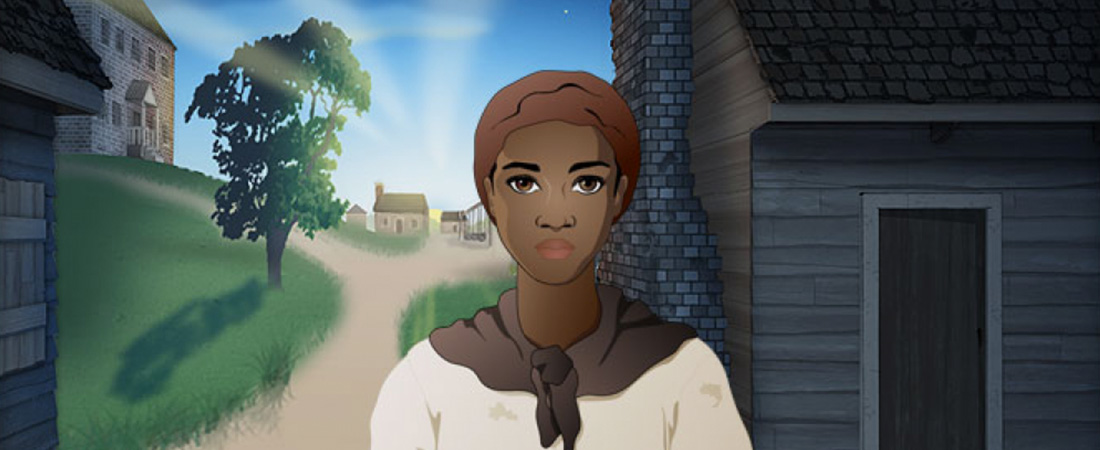Digging into History and Social Studies

Screenshot of Mission U.S. "Flight to Freedom"
The new Common Core State Standards are raising the bar for how teachers teach and how students learn. It’s no longer enough for students to read short passages and retain the details long enough to recall them on an exam; they must now be able to read and comprehend complex texts, and what’s more, cite them as evidence in writing their own arguments and explanations.
This, says media researcher and designer Bill Tally of EDC’s Center for Children and Technology (CCT), presents new opportunities for social studies teachers to reconnect with the core skills of historical thinking and to engage students in fresh ways of thinking about the stories history tells.
Q: What do the Common Core standards mean for social studies teachers?
 Tally: Early on, a lot of social studies teachers felt marginalized, as the math and literacy standards loomed so large in schools. They felt that their own subject matter was being pushed out, and that they were being asked to become ELA teachers, since the Common Core asked for teaching literacy across the disciplines. Also, the standards were often poorly explained, and many teachers were unsure about just what implementing them meant for their practice.
Tally: Early on, a lot of social studies teachers felt marginalized, as the math and literacy standards loomed so large in schools. They felt that their own subject matter was being pushed out, and that they were being asked to become ELA teachers, since the Common Core asked for teaching literacy across the disciplines. Also, the standards were often poorly explained, and many teachers were unsure about just what implementing them meant for their practice.
Q: How has that changed now that the standards have been in place a few years?
Tally: Lots of social studies teachers are embracing the challenges of the Common Core standards and figuring out what they mean for their own discipline. We’ve been watching teachers in New York City learn about the standards with the guidance of our colleagues at CUNY’s American Social History Project, and I’ve seen their learning progress in three ways.
First, social studies teachers are realizing they have already been doing many of the things the standards ask for, such as helping students read challenging nonfiction texts—from speeches, laws, and political cartoons to maps and charts and graphs. Some teachers have been surprised to have their ELA colleagues turn to them for help with strategies for nonfiction texts.
Second, teachers are gaining new insights on the places where students really struggle—such as moving from reading and note-taking to writing coherent paragraphs that cite sources. They see that the Common Core can help them work on these gaps.
Finally—and perhaps most importantly—teachers are starting to see how a greater focus on literacy actually strengthens students’ grasp of history. The latest research by psychologist Sam Wineburg and others suggests that learning history means learning to read and write in the distinctive ways historians do—constructing a context, asking about motive and bias, evaluating different accounts and perspectives, using details from documents as evidence. All of these things need to be the staples of history and social studies teaching.
But social studies teachers still need lots of support in learning how to act on the new standards and combine the traditional demand of content mastery—hundreds of years of history, for example—with this greater focus on literacy skills. There’s no magic bullet.
Q: How can technology play a role in helping social studies teachers teach kids to work with source materials?
Tally: CCT started to explore this issue in the mid 1990s by helping teachers and kids access big archives of primary sources from the Library of Congress and other national archives as they became available online. We learned a lot about how teachers and kids work to construct stories about American history based on primary documents.
Later, we created Picturing Modern America, a set of thinking tools and activities for middle and high school kids and teachers. This supported their use of primary documents and visuals, especially images, lithographs, and maps. More recently, working with WNET and the CUNY American Social History Project, we’ve been the research and evaluation partners in helping produce a series of successful middle school-level history games called Mission U.S.
Now we are working on a project entitled Zoom In! Tools for Teaching Literacy in the Social Studies and a related project called Badges for Teacher Mastery. With Zoom In!, we’re creating a suite of digital tools to help middle school classrooms accomplish four instructional shifts—engaging in richer conversations about the past based on evidence, reading historical sources for purpose and point of view, citing evidence from text while writing, and identifying how specific events and documents were shaped by the larger world around them.
We’ve begun pilot-testing Zoom In! in schools and are excited by the results so far. Our hope is to support social studies teachers and students in developing the habits and curiosity to have deeper, more personal conversations about history throughout their lives.
